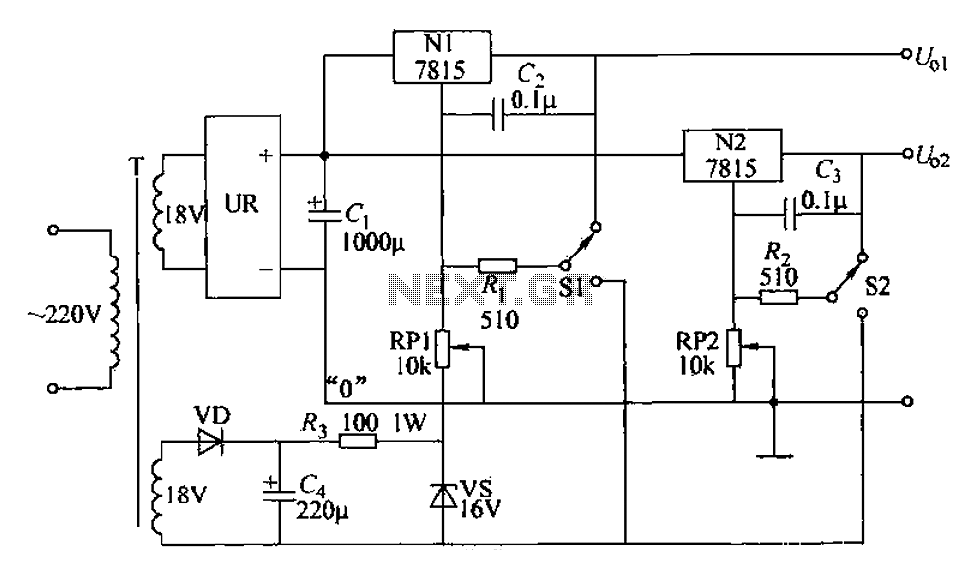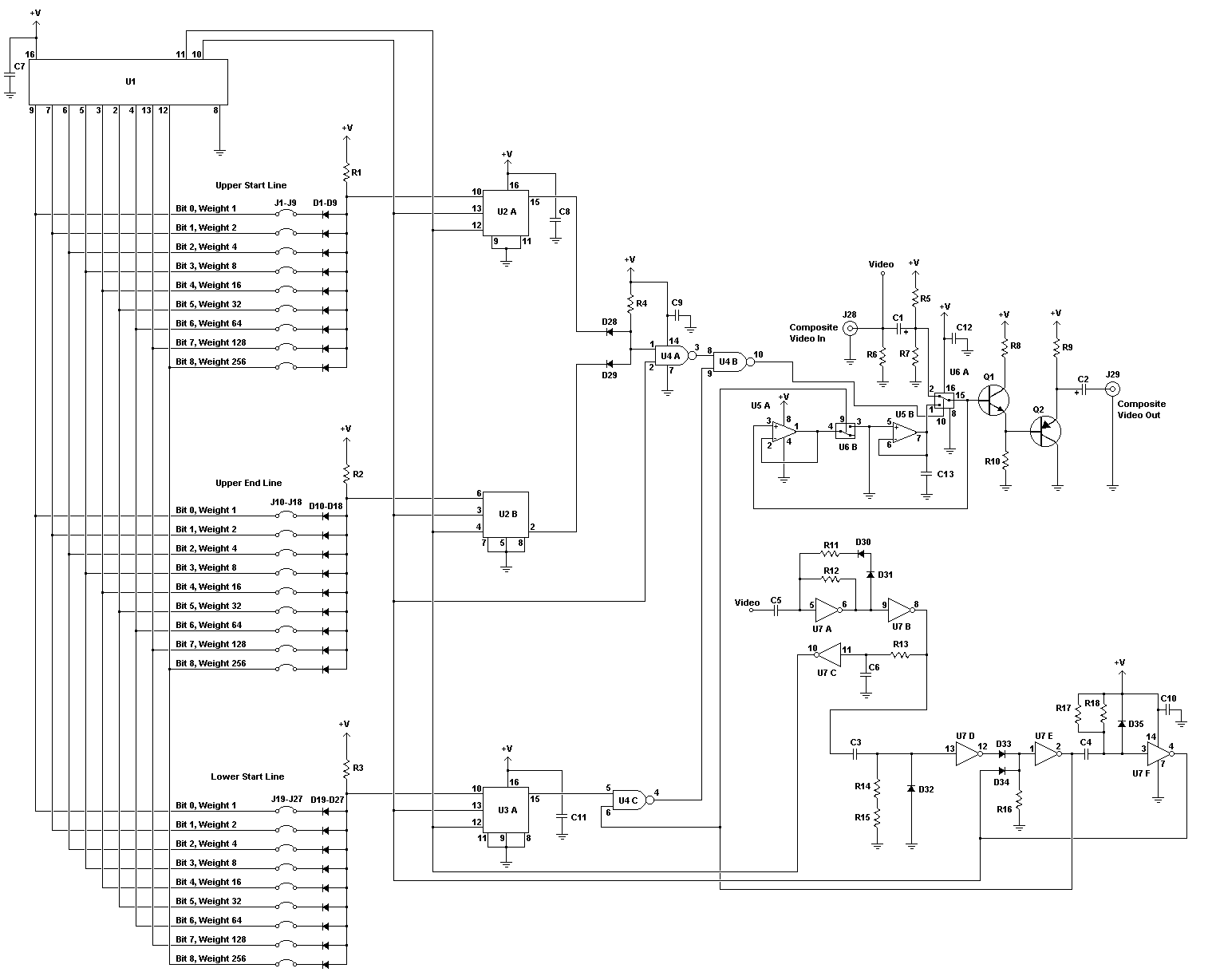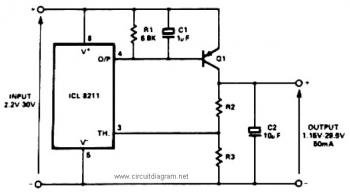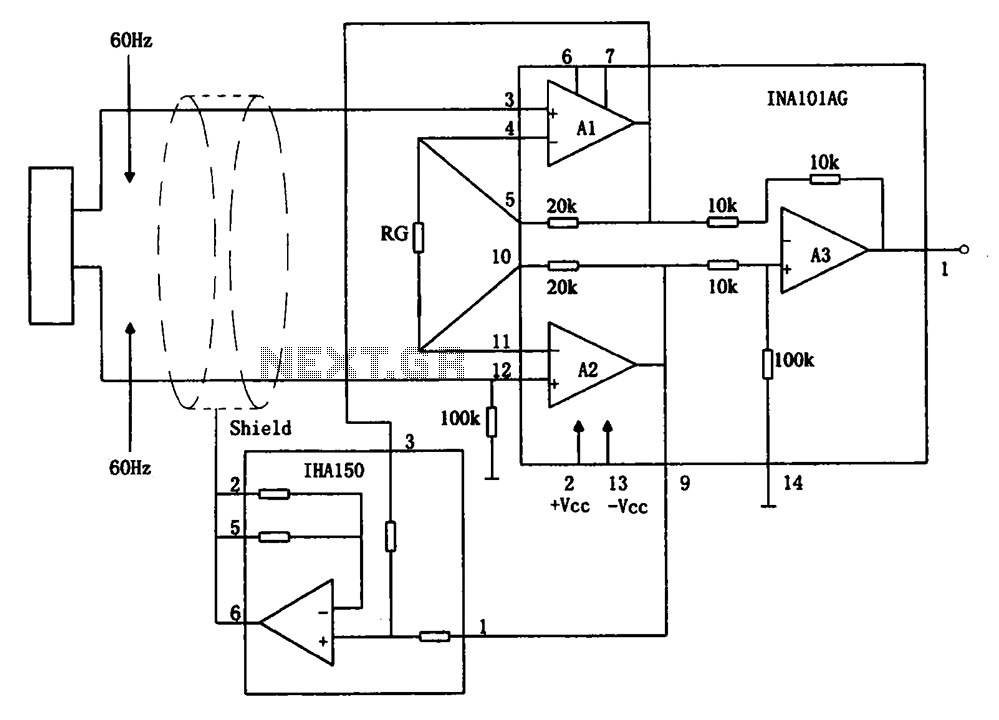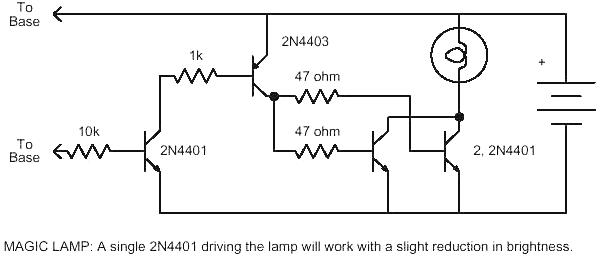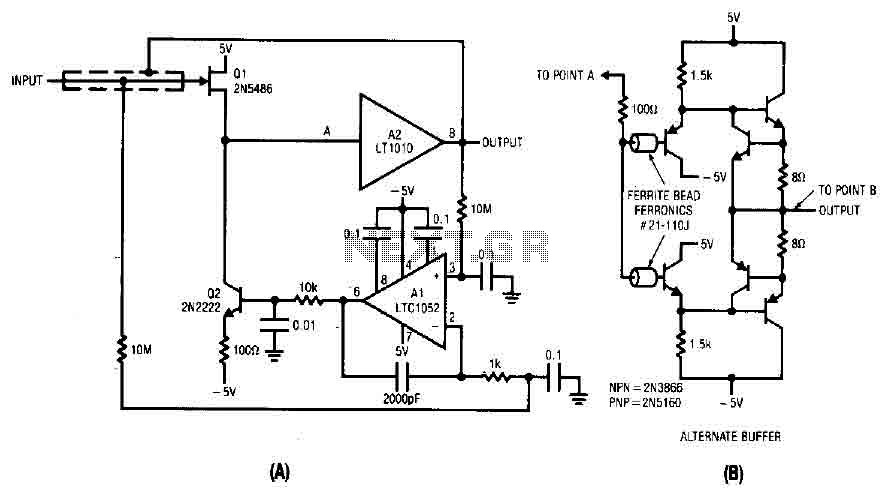
Mains Pulse Circuit
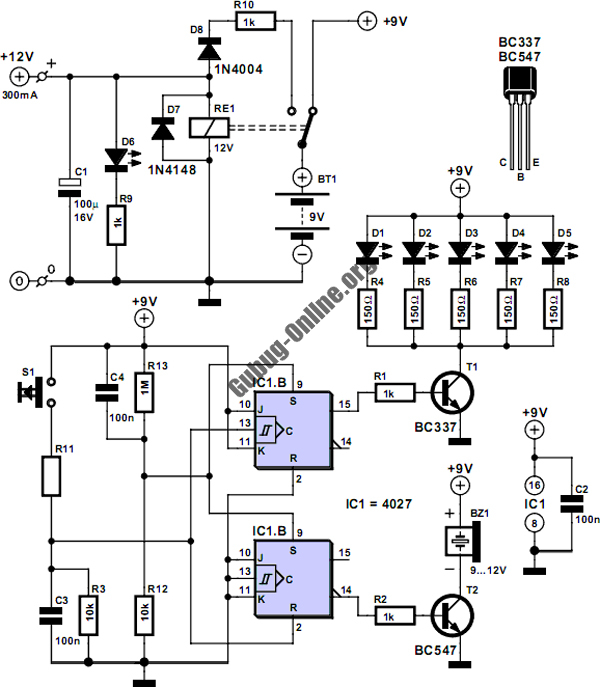
This circuit is designed to control the mains pulse. The pulser's purpose is to switch the mains voltage on and off at intervals ranging from just under one second to a maximum of ten minutes. This functionality is beneficial for testing mains-operated equipment over extended periods or for the periodic activation of machinery. Transformer Tr1, along with the bridge rectifier and regulator IC1, provides a stable 12V supply rail for IC2 and the relay. The timer is configured so that the capacitor, which determines the timing period, can be charged and discharged independently. Four different time ranges can be selected by using jumpers to choose capacitors. Short-circuiting positions 1 and 2 results in the longest timing interval, while not short-circuiting any positions yields the shortest. The schematic circuit diagram illustrates this configuration. In the shortest timing scenario, a 10 µF capacitor connected to pins 2 and 6 of the timer IC sets the timing alongside the relevant resistors. This capacitor's value can be slightly adjusted to a lower specification. Two preset potentiometers allow for the customization of the on and off periods. A 1k resistor in series with one of the presets establishes the minimum discharge time. The timer IC activates a relay with double-pole contacts, which in turn switches the mains voltage. Two LEDs indicate the status of the mains voltage, with red indicating that the mains voltage is active and green indicating it is not. A 100mA slow fuse safeguards the mains transformer and low-voltage circuit, while a 4 A medium slow fuse protects the relay from overload conditions.
This circuit is an example of a programmable timer relay system that effectively manages the on-off control of mains voltage for various applications. The use of a transformer (Tr1) ensures that the circuit operates safely by stepping down the mains voltage to a manageable level. The bridge rectifier converts the AC voltage from the transformer into a stable DC voltage, which is then regulated to 12V by IC1, providing a reliable power source for the timer IC (IC2) and the relay.
The timer’s configuration allows for flexibility in timing, with the ability to select from four distinct time intervals. This is achieved through the use of jumpers that connect different capacitors, influencing the charge and discharge cycles of the timing capacitor. The option to short-circuit certain positions enhances the functionality by extending the timing range, making it suitable for both short and long operational periods.
The dual preset potentiometers provide further customization, allowing users to fine-tune the on and off durations to meet specific operational requirements. The inclusion of a 1k resistor ensures that the discharge time remains within a safe and functional range, preventing rapid cycling that could lead to relay failure.
The relay's double-pole contacts are critical for switching the mains voltage, enabling control over larger loads while maintaining safety. The indicator LEDs offer a visual cue of the circuit's operational status, enhancing user interaction and monitoring. The protective fuses are essential for safeguarding the circuit components against potential overloads, ensuring longevity and reliability in operation. Overall, this circuit exemplifies an efficient design for controlling mains voltage in various applications, combining safety features with programmable timing capabilities.This is a circuit that used to main pulse. The pulser is intended to switch the mains voltage on and off at intervals between just under a second and up to 10 minutes. This is useful, for instance, when a mains-operated equipment is to be tested for long periods, or for periodic switching of machinery.
Transformer Tr1, the bridge rectifier, and r egulator IC1 provide a stable 12V supply rail for IC2 and the relay. The timer is arranged so that the period-determining capacitor can be charged and discharged independently. Four time ranges can be selected by selecting capacitors with the aid of jumpers. Short-circuiting positions 1 and 2 gives the longest time, and short-circuiting none the shortest. Here`s the figure of the schematic circuit diagram; In the latter case, the 10 µF capacitor at pins 2 and 6 of the timer IC determines the time with the relevant resistors.
The value of this capacitor may be chosen slightly lower. The two preset potentiometers enable the on and off periods to be set. The 1k resistor in series with one of the presets determines the minimum discharge time. The timer IC switches a relay whose double-pole contacts switch the mains voltage. The LEDs indicate whether the mains voltage is switched through (red) or not (green). The 100mA slow fuse protects the mains transformer and low-voltage circuit. The 4 A medium slow fuse protects the relay against overload. 🔗 External reference
This circuit is an example of a programmable timer relay system that effectively manages the on-off control of mains voltage for various applications. The use of a transformer (Tr1) ensures that the circuit operates safely by stepping down the mains voltage to a manageable level. The bridge rectifier converts the AC voltage from the transformer into a stable DC voltage, which is then regulated to 12V by IC1, providing a reliable power source for the timer IC (IC2) and the relay.
The timer’s configuration allows for flexibility in timing, with the ability to select from four distinct time intervals. This is achieved through the use of jumpers that connect different capacitors, influencing the charge and discharge cycles of the timing capacitor. The option to short-circuit certain positions enhances the functionality by extending the timing range, making it suitable for both short and long operational periods.
The dual preset potentiometers provide further customization, allowing users to fine-tune the on and off durations to meet specific operational requirements. The inclusion of a 1k resistor ensures that the discharge time remains within a safe and functional range, preventing rapid cycling that could lead to relay failure.
The relay's double-pole contacts are critical for switching the mains voltage, enabling control over larger loads while maintaining safety. The indicator LEDs offer a visual cue of the circuit's operational status, enhancing user interaction and monitoring. The protective fuses are essential for safeguarding the circuit components against potential overloads, ensuring longevity and reliability in operation. Overall, this circuit exemplifies an efficient design for controlling mains voltage in various applications, combining safety features with programmable timing capabilities.This is a circuit that used to main pulse. The pulser is intended to switch the mains voltage on and off at intervals between just under a second and up to 10 minutes. This is useful, for instance, when a mains-operated equipment is to be tested for long periods, or for periodic switching of machinery.
Transformer Tr1, the bridge rectifier, and r egulator IC1 provide a stable 12V supply rail for IC2 and the relay. The timer is arranged so that the period-determining capacitor can be charged and discharged independently. Four time ranges can be selected by selecting capacitors with the aid of jumpers. Short-circuiting positions 1 and 2 gives the longest time, and short-circuiting none the shortest. Here`s the figure of the schematic circuit diagram; In the latter case, the 10 µF capacitor at pins 2 and 6 of the timer IC determines the time with the relevant resistors.
The value of this capacitor may be chosen slightly lower. The two preset potentiometers enable the on and off periods to be set. The 1k resistor in series with one of the presets determines the minimum discharge time. The timer IC switches a relay whose double-pole contacts switch the mains voltage. The LEDs indicate whether the mains voltage is switched through (red) or not (green). The 100mA slow fuse protects the mains transformer and low-voltage circuit. The 4 A medium slow fuse protects the relay against overload. 🔗 External reference
